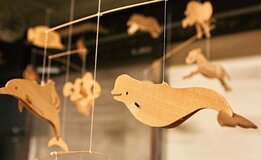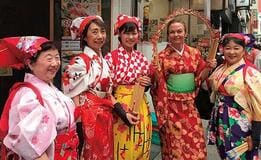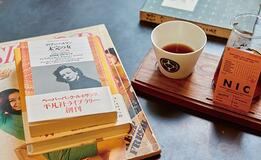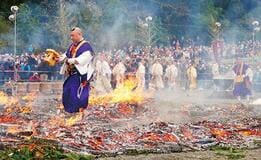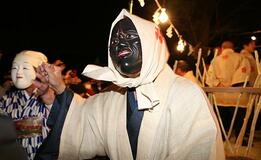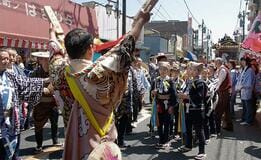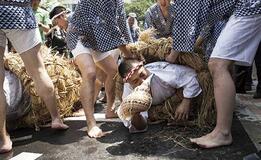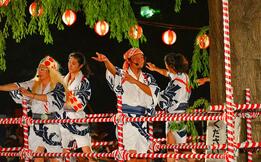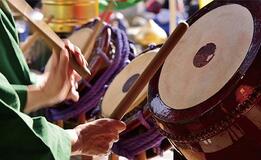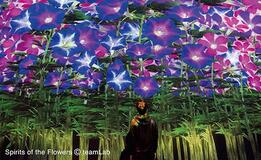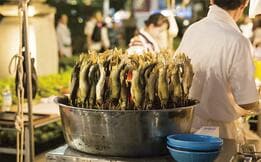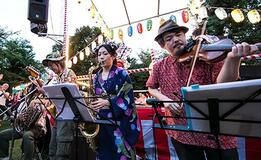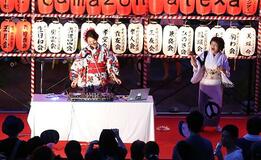【Vol.25】Kimura Ihei Award–winning photographer Masataka Nakano reflects on the profound relationship between Tokyo festivals and water
The Japanese people have long believed that gods reside in mountains, rivers and seas, and throughout the natural world. They began holding festivals as ceremonies to express their gratitude to nature and the gods. I believe this original nature of festivals is why fire and water, two of the four elements of nature, play such important roles in them. Tokyo is home to several water-related festivals. The Ebara Shrine Festival of Shinagawa, also known as the Kappa Matsuri Festival, is one of Tokyo's largest, covering a tremendous distance.
In the early Edo era, as the story has it, a villager saw a mask of the god Susano'o-no-Mikoto drifting at sea. He fished it out of the water and brought it to the Ebara Shrine, where it was then enshrined. The shrine's priest then had a revelation in a dream saying that as the mask came from the sea, it must be taken back to the sea once a year. The mask was placed in a mikoshi portable shrine and taken to the sea, and that same year the fishermen enjoyed a tremendous catch. It thus became an annual tradition to bring the mask to the sea to pray for bountiful catches and harvests.

When I photographed the procession, the mikoshi decorated with a mask was carried from the base of the Susaki Bridge down the Meguro River and out onto Tokyo Bay. Accompanied by lively festival music, energetic young people carried the mikoshi into the waters of the bay, the air reverberating with their powerful voices in this event of prayer and remembrance. The scene of the mikoshi-bearers splitting up, boarding dozens of fishing boats, and crossing Tokyo Bay en masse is striking, like a fleet setting out during the Warring States era. I still remember how incredibly fired up and passionate everyone was.
These kinds of festivals always crackle with this electric, intensely focused atmosphere. The energy created when a whole community comes together as one fills the air, inspiring a powerful, almost supernatural feeling.
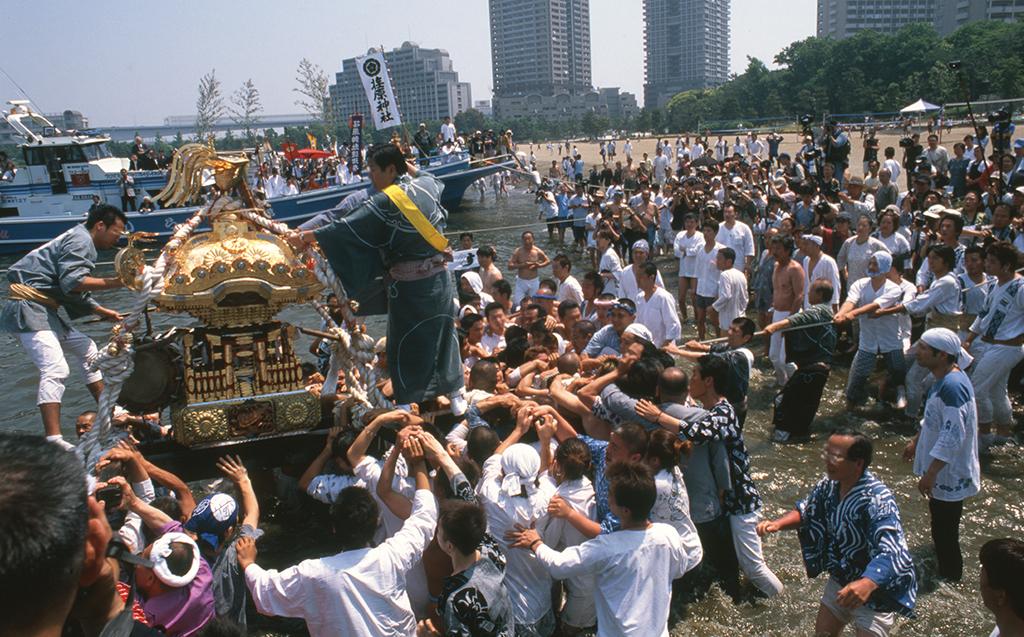
Another festival tied to water is the Tomioka Hachiman Shrine's Fukagawa Hachiman Festival. Also known as the "Water Splashing Festival," this festival fills the air with arcs of splashing water, as the name implies. A total of 120 mikoshi large and small are carried through the streets and constantly showered with water to purify them. The sight of the water glittering in the sunlight, combined with the steam rising from the bodies of the mikoshi-bearers, is truly beautiful. On the roads along which the shrines are borne, you can see startling scenes of fire brigades using hoses to shower water on the procession. Even the spectators become soaked, feeling that they, too, have been purified.
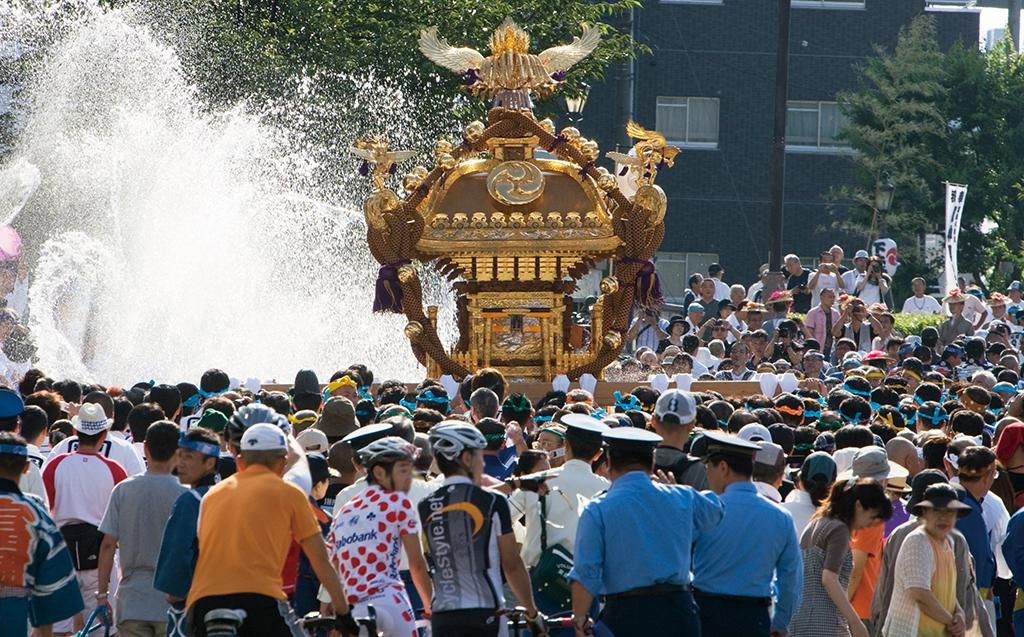
In my work as a photographer I am always awe-struck by water. This is true not only on nature shoots, when I photograph rivers or the sea, but also when I photograph droplets of spraying water, like at this festival. Water is what makes our planet the way it is, so of course it is sublime in itself. But when it plays a part in festivals honoring the gods, it takes on an even more majestic and sacred aspect.
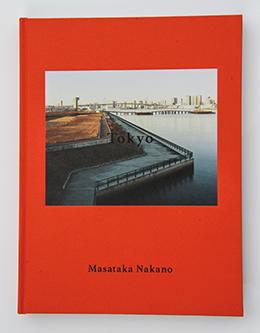
Photograph and text: Masataka Nakano
Born in Fukuoka Prefecture in 1955. Moved to Tokyo the following year, where he has lived ever since. Graduated from Musashino Art University's College of Art and Design with a degree in Visual Communication Design in 1979. Began working as a freelance photographer in 1980. Projects included advertisements and magazine covers. In 2000, Nakano published Tokyo Nobody, (Little More), a collection of photographs of Tokyo without people. This work caught the popular imagination, influencing movies and literature. The next year, he was awarded the Photographic Society of Japan Awards Newcomer's Award. In 2005, he published Tokyo Windows (Kawade Shobo Shinsha), a collection of photographs of Tokyo's features taken through the windows of buildings, for which he won the 2004 Kimura Ihei Award. From 2019 to 2020 he presented a photo exhibition simply entitled Tokyo at the Tokyo Photographic Art Museum.
http://www.artunlimited.co.jp/artists/masataka-nakano.html
N.B. The information on this site is correct as of August 2019. It is subject to change without notice, so please confirm the details before coming to the festival.
(This is a "Tokyo Tokyo Old meets New" Project.)







